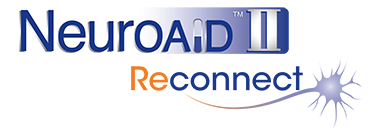

Time is crucial when it comes to immediate stroke care. Every second counts to prevent more damage from happening to the brain.
That is why hospitals have developed stroke units dedicated to stroke patients. These units are designed to rapidly assess, treat and look after patients, giving them the best chance of recovering. So, what exactly happens in a stroke unit?

A stroke unit is a dedicated wing allowing specialists to treat and manage stroke patients from the second they arrive until they are stable enough to start rehabilitation.
This unit is made up of medical specialists who are needed to help treat a patient after a stroke such as: emergency doctors, neurologists, radiologists, neurosurgeons, nurses and rehabilitation therapists.
They all play a key role in ensuring that patients get the best care available upon arrival and within the shortest possible time window. This is because the brain suffers significant damage once a stroke occurs causing the death of neurons inside the brain. This can prevent the patient from walking, talking or eating. The limited time window to provide the best available care is underlined by Prof. Hassan Hossieni, Head of the Henri Mondor University Hospital Stroke Unit in France, who says that doctors “have less than 30 minutes to treat a patient”.
Learn more about Stroke Units with Noemie and Professor Hosseini
Professor Hassan Hosseini
Professor of Neurology,
Head of the Stroke Unit,
Henri Mondor University Hospital,
Creteil, France

Upon arrival at a stroke unit, an emergency physician assesses the condition of the patient. After a quick review of their basic cognitive functions, radiologists perform a CT scan to confirm that a stroke is taking place.
Once a stroke is confirmed, acute treatments might be used, depending on the type of stroke and the patient’s profile. This could be down to:
- Ischemic strokes triggered by a blood clot in the brain. The patient can be treated by thrombolysis to dissolve the clot or reduce its size. A thrombectomy can be performed to remove the clot.
- Haemorrhagic strokes are caused by a bleed in the brain. In this case, neurosurgery might be needed such as performing a decompressive hemicraniectomy to lower the pressure and resolve the bleeding.
Following these emergency treatments, the patient is monitored as they begin to recover. From here, rehab specialists such as speech therapists, physiotherapists and occupational therapists will work with physicians and neurologists to create a rehabilitation plan adapted to the patient.

When it comes to strokes, immediate treatment is essential for survival and to increase the chance of recovery. Treating patients at a dedicated facility such as a stroke unit allows for a rapid response with all the key personnel and resources needed in one place.
Time is brain!
References:
1. Let’s talk about Stroke Units with Noemie and Professor Hassan Hosseini video by Moleac Pte Ltd. (2022).
2. Understanding stroke-A guide for stroke survivors and their families book by Moleac Pte Ltd. (2014).
3. What is done in the hospital for stroke? Video by Moleac Pte Ltd. (2014).
Website: Moleac.com
Contact: [email protected]
This document does not constitute the practice of medical consultation nor medical advice. Always seek the advice of your treating physician and/or specialist.
All Rights Reserved by Moleac Pte Ltd, Helios #09-08, 11 Biopolis Way, Singapore 138667



